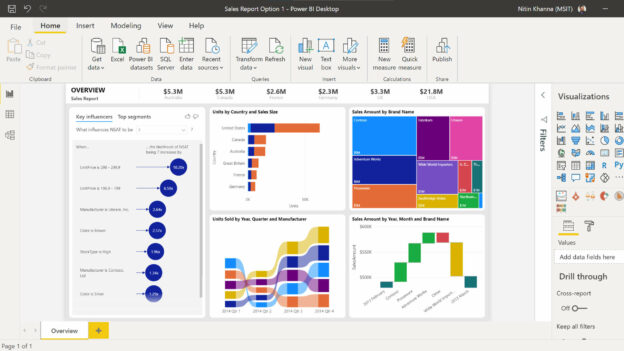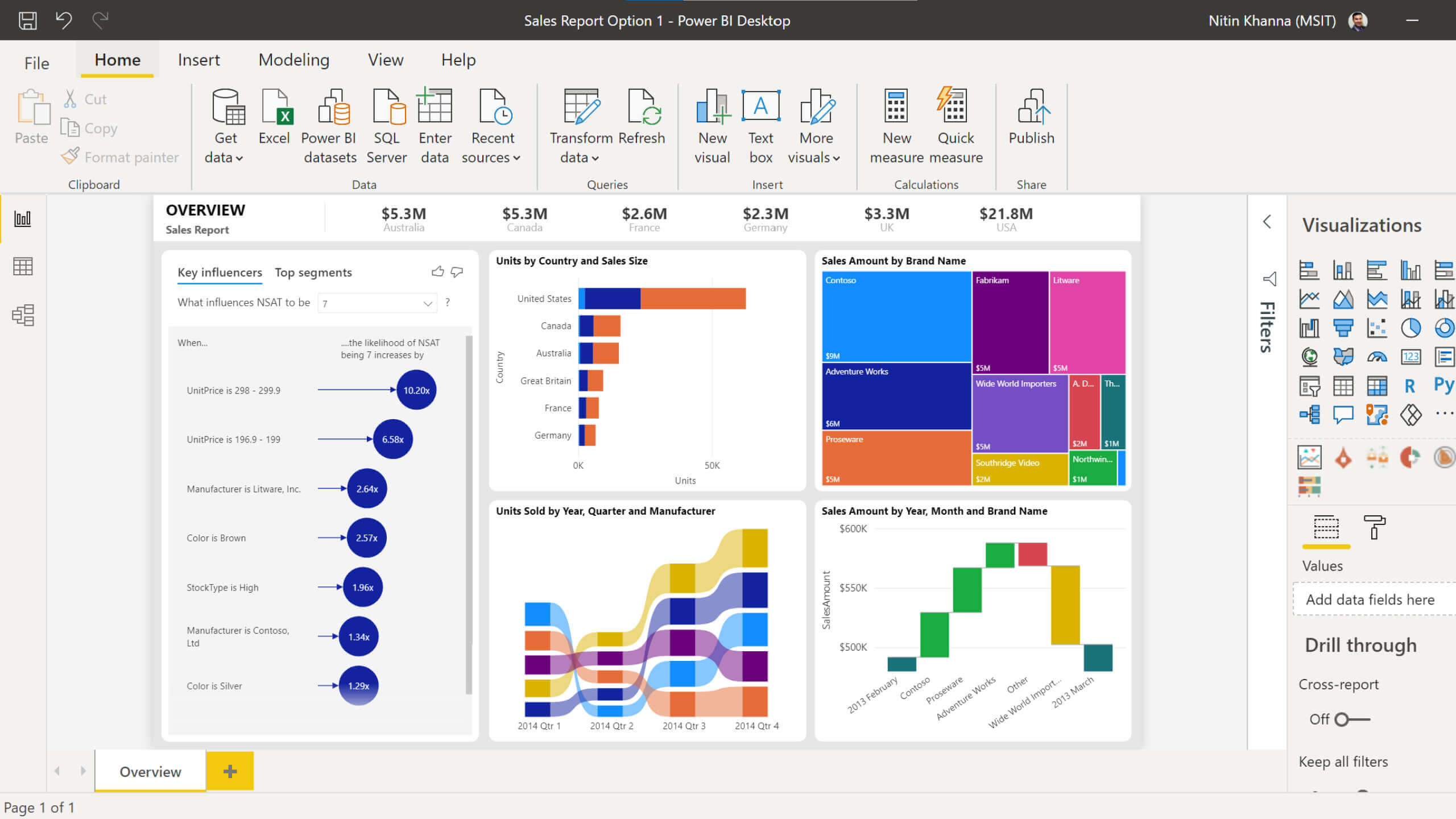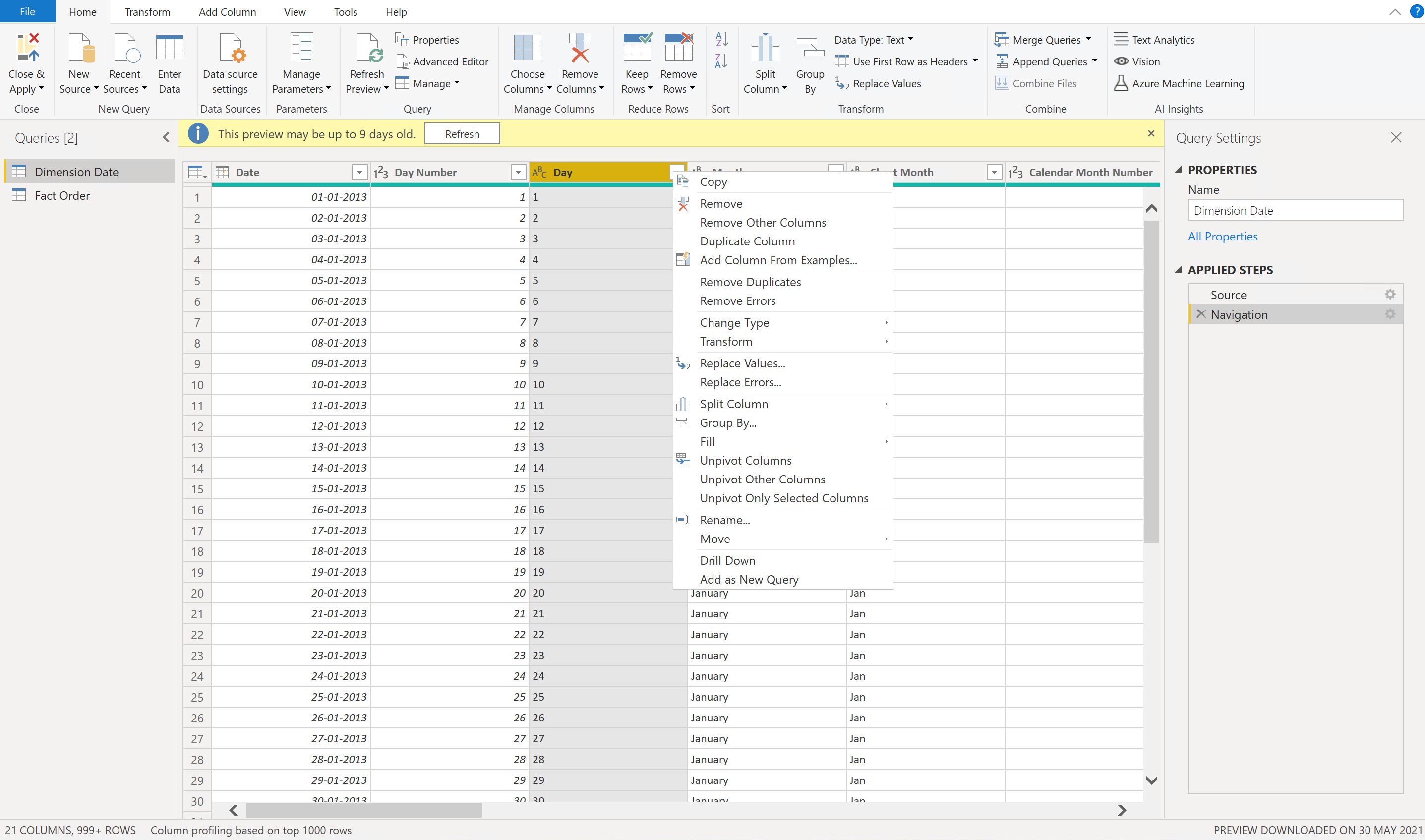In this article, we are going to learn about the most popular Power BI Interview Questions being asked while applying for a Data Analyst role. Power BI is one of the most commonly used data visualization tools in the market. It is offered as a desktop tool using which you can author your reports and dashboards and then publish and share them with your users on the cloud. Power BI is also somewhat similar to Excel, so users who have prior experience with working in Excel can learn it quite easily.
In this article, we are going to focus on some of the most common Power BI Interview Questions that are being put forward while hiring for a Data Visualization Engineer.
Figure 1 – Power BI Dashboard (Source)
Power BI Interview Questions
Let us now learn about some of the most commonly asked Power BI interview questions in detail.
What is Power BI?
Power BI is a cloud-based data visualization application. Users can connect to their datasets and create their own reports and can leverage Power Query, Power Pivot, etc. You can interact with the visuals on the report by applying filters, and slicers to the data. Once the report is up, you can share it with multiple users using their email addresses.
What are the various offerings from Power BI?
Power BI has multiple offerings which are as follows:
- Power BI Desktop – Power BI Desktop is a free tool offered by Microsoft that can be installed on Windows machines. You can use Power BI Desktop to connect to your on-premise datasets, the author reports on your machine and then publish them to the cloud. You can also create your own data model using the Power BI Desktop by bringing in data from various data sources and then creating a logical data model out of it
- Power BI Pro – Power BI Pro is a license that is offered to an individual Power BI user using which they can leverage multiple features from the Power BI Service. It also enables Pro users to share content with other Pro users and can publish content to other workspaces in the Power BI Service
- Power BI Premium – Power BI Premium is an added capacity-based license that allows more performance to the Power BI Pro service. If you have a large organization, then the ideal case would be to use Power BI Premium as it doesn’t require the licenses at an individual level
- Power BI Embedded – Power BI Embedded is another feature of the Power BI Service, using which users can embed their reports on their applications or web pages. This is done by leveraging the Power BI REST APIs that can provide authentication and embedding functionalities for the report
What are the primary components in Power BI?
One of the most commonly asked Power BI interview questions is about the various components of the Power BI. There are several components as follows:
- Datasource – This is the connection to the source from where the data has to be read. It can be an Excel file or a SQL Server database
- Datasets – This is the data that has been imported into the Power BI engine. It uses the datasource to connect to it and load the data into the Power BI data model
- Reports – Reports are a collection of visuals that narrate a story. It is a combination of multiple visuals like Pie charts, Bar charts and metrics that are created on the dataset
- Dashboards – The dashboard is a single-layer visualization of charts from one or multiple reports. It is used to provide an overview of visuals from all the reports. Users have the ability to drill down into the visuals and understand the reports in more depth
- Tiles – These are the individuals’ visuals that appear on the dashboard. The tiles can be created from one visual and can be used for the purpose of embedding as well
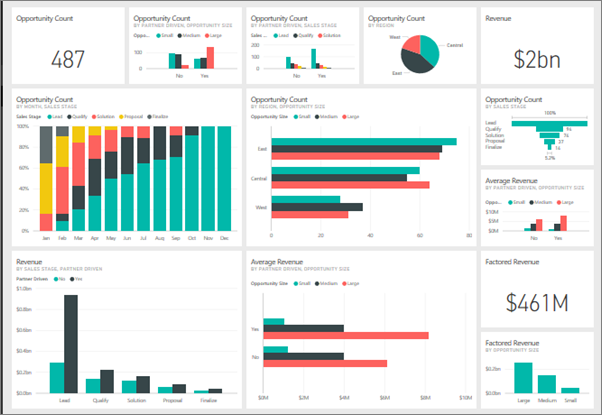
Figure 2 – Power BI Dashboard (Source)
What are the different types of filters in Power BI?
Another important Power BI interview question is regarding the types of filters that we can use. There are three types of filters in Power BI as follows.
- Visual Filters – These filters are applied to the visual only. It will not affect the data on any other visual on the report except the one to which it is applied to. For example, a bar chart that shows only the last 12 months’ data on the visual
- Page Filters – These filters are applied on the page level. All the visuals on the page will be impacted by this filter. For example, when viewing data for a specific country or region, you can apply this filter and all the visuals on the page will be filtered based on this
- Report Filters – As you know, a Power BI report can have multiple pages like we have sheets in Excel, sometimes, it is important that we filter the entire report based on a condition. This can be done by using the report-level filters. For example, in a multi-tenant report, you can set the tenant as a report level filter that will be applied on all the visuals across each of the pages
What is DAX?
It is almost impossible that DAX is not discussed in a Power BI interview question. DAX, abbreviated as Data Analysis Expressions that can be used to perform calculations within the Power BI report. Users can create calculated columns and measures using DAX. However, an important point to note about DAX is that it cannot create or load data into the Power BI Data model. Instead, it can only create calculated measures based on existing data in the model.
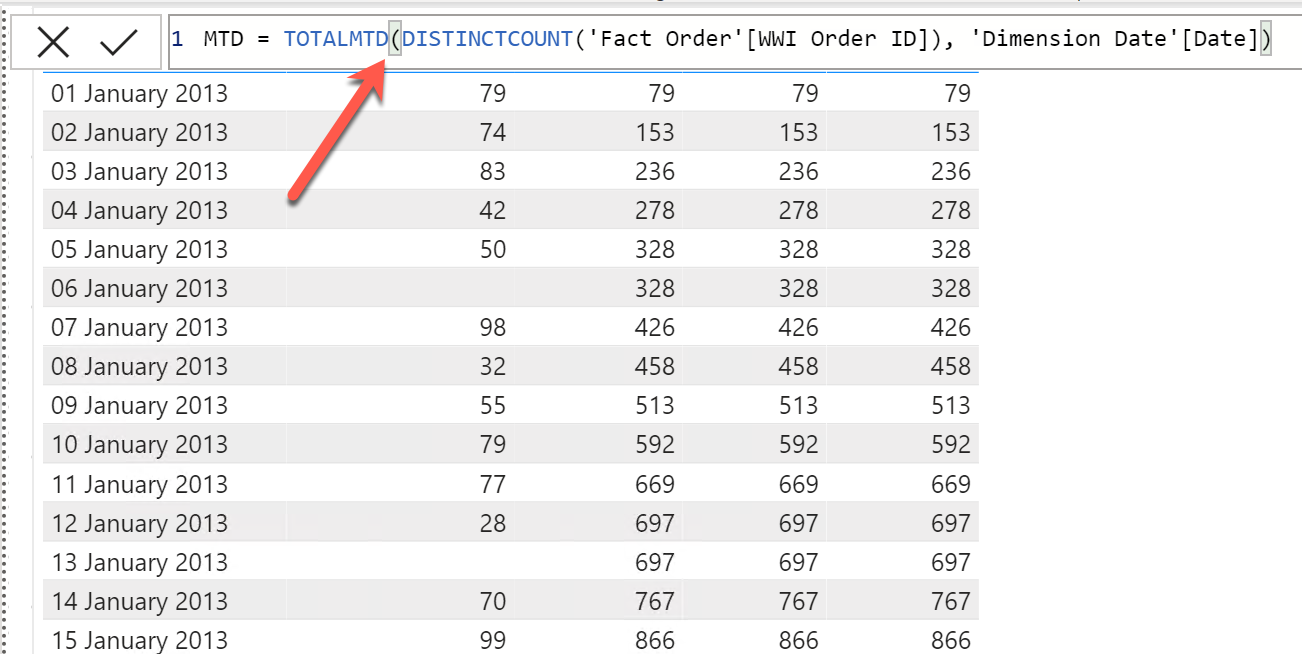
Figure 3 – DAX Function to calculate MTD Sales
What are some of the important DAX functions?
DAX is often written as a combination of nested functions that are wrapped within one another. Some of the most common DAX functions are SUM, MIN, MAX, AVG, COUNT, ISBLANK, SUMMARIZE, SUMMARIZECOLUMNS, DATEDIFF, CALCULATE, FILTER etc. If you want to read more about DAX functions, you can follow the official documentation.
What is Power Query?
Power Query is the technology provided by Microsoft using which tools such as Excel and Power BI are able to connect to the various data sources and read data from. Power Query provides a data preparation technique that leverages the M Query language and you can manipulate and transform your data before loading it into the Power BI Data model. Power BI comes with a Power Query Editor that can help users writing the code in M Query language. These transformations are applied in steps one after the other and hence can be removed or altered based on the sequence. An important point to note here is the Power Query is the same technology that is being also used by other Microsoft tools such as Excel and SQL Server Analysis Services.
Figure 4 – Power Query Editor in Power BI
What do you mean by Query Folding in Power Query?
Although this is an advanced topic, however, some interviewers might ask to see if the candidate has some ideas on complex topics like this. As already discussed, using Power Query, you can transform or manipulate your data before bringing it into the Power BI model. Query Folding in Power Query is the technique that generates the native SQL statement to fetch the transformed data as defined in the Power Query steps. To read more about Query Folding please refer to the documentation.
Conclusion
In this article, we have learned about some of the most popular Power BI Interview Questions. Power BI is a powerful data visualization tool using which you can build compelling reports and dashboards that users can navigate through and understand the narration of the story. You can get started with Power BI by downloading the Desktop version on your machine and then start using it. You can also read more about Power BI from the official documentation.
- Getting started with PostgreSQL on Docker - August 12, 2022
- Getting started with Spatial Data in PostgreSQL - January 13, 2022
- An overview of Power BI Incremental Refresh - December 6, 2021

